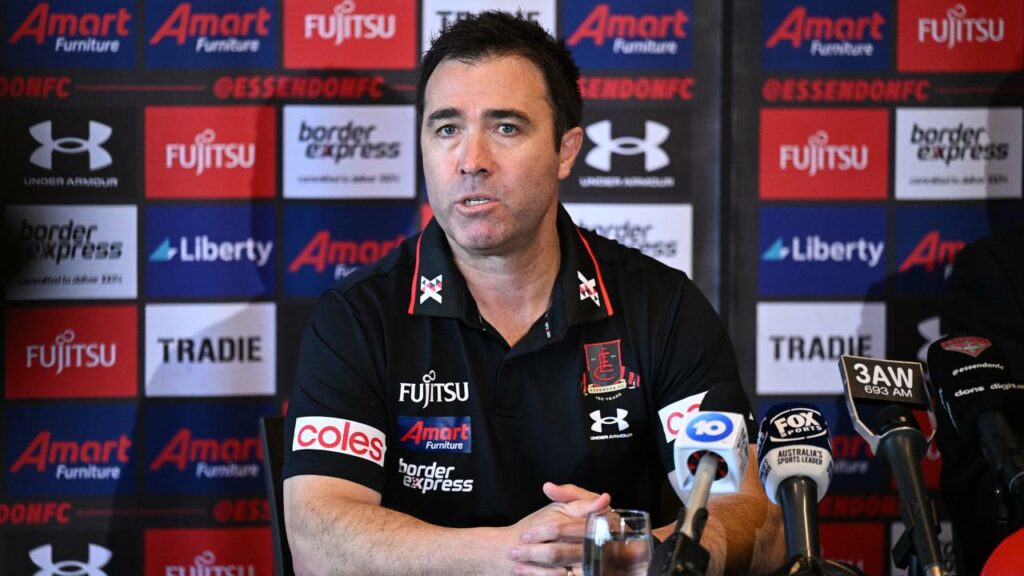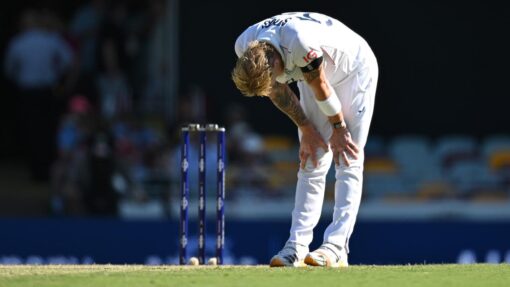AFL players clear on dangerous tackles: coaches
Anna Harrington, Shayne Hope and Murray Wenzel |

Essendon coach Brad Scott insists AFL players understand what constitutes a dangerous tackle but executing under pressure is another matter.
Scott maintains there should also be some onus on the ball carrier to protect themselves.
Amid a spate of rough-conduct suspensions and concern over concussions, the AFL issued a memo to clubs on Thursday night clarifying its position on dangerous tackles.
Essendon skipper Zach Merrett and Collingwood vice-captain Taylor Adams will miss the Anzac Day blockbuster through dangerous-tackle bans.
“There’s not confusion. The AFL sent out absolute clarity again last night in terms of clarifying what constitutes a dangerous tackle and all the factors that go into that,” Scott, formerly the AFL’s football boss, told reporters.
“But there was nothing new in that – that was clarification of what’s existing at the moment.
“I really feel for players who are trying to be aggressive in a tackle but yet show duty of care all at the same time. The players … are not clear on how to exactly execute that.
“So that’s going to be an ongoing discussion for the whole industry to address because we all agree that we don’t want to see players getting hurt.
“But we’ve also got to put some onus on the ball carrier that they’ve got a responsibility to protect themselves.
“I feel for them because if you’ve got one arm pinned and you’ve got the ball in the other hand, if you get tackled your only option to protect yourself is to drop the ball and brace your fall.
“So the challenge for the players is they risk concussion if they don’t drop the ball, but they get pinged holding the ball if they do drop it.”
Port Adelaide coach Ken Hinkley and Carlton assistant Ash Hansen said rules around dangerous tackles were clear to their clubs and players.
Brisbane coach Chris Fagan was sympathetic, particularly when a player was tackling someone smaller.
“How could our players not be aware? It’s been the case for quite a few years, the AFL is clamping down on dangerous tackles,” Fagan said.
“I feel really sorry for players. Most of the dangerous tackles that do occur are not intended, they just turn out that way.
“It’s really difficult to coach the players not to tackle with vigour … you’ve got to do that with an element of aggression.
“It’s a hard spot to be in for everyone.”
Geelong coach Chris Scott expects there will always be anomalies and mistakes made on dangerous tackle rulings but it was “a quirk of the game that we just have to accept”.
“It’s a complicated game to play, the rules are complicated and it’s really difficult to umpire,” Scott said.
“We see situations where, even with the benefit of multiple replays and slow-motion video, it’s still hard to get a feel for what the right decision is and what you can and can’t do.
“The AFL have done a good job of explaining it from their perspective and given the players and the coaches the cues that they need.”
AAP


